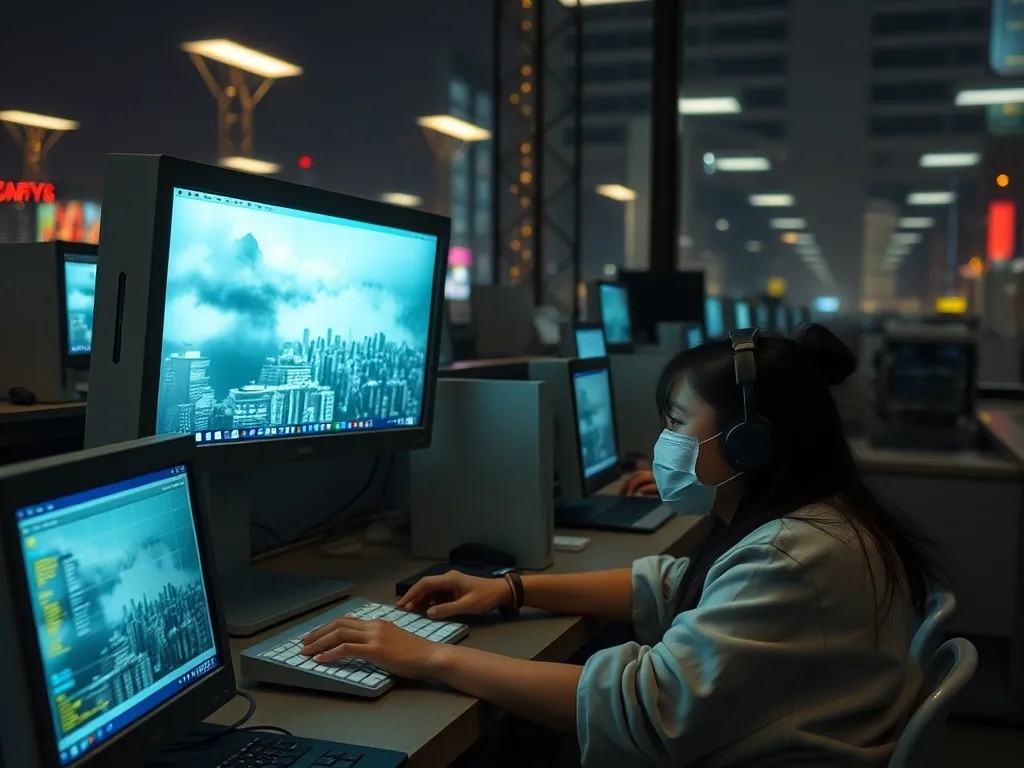In recent years, there has been a significant advancement in the field of Artificial Intelligence (AI) and Augmented Reality (AR). These technologies have become increasingly popular and have the potential to enhance virtual experiences in various fields such as gaming, education, healthcare, and...
Computer Program Cleans Polluted Air in Cities While People Sleep

Silent Guardians of Urban Air Quality
A revolutionary computer program is transforming urban air quality by orchestrating sophisticated air cleaning operations during nighttime hours. While city residents sleep peacefully in their beds, an invisible network of sensors, filters, and purification systems work tirelessly under the guidance of artificial intelligence to remove pollutants and restore breathable air. This innovative approach to environmental management represents a breakthrough in addressing one of the most pressing challenges facing modern cities.
Urban air pollution has reached critical levels in many metropolitan areas worldwide, contributing to respiratory diseases, cardiovascular problems, and reduced quality of life. Traditional approaches to air quality management have focused primarily on reducing emissions, but this new technology takes a proactive approach by actively removing existing pollutants from the atmosphere.
How the System Works
Intelligent Monitoring and Analysis
The computer program operates through a network of air quality sensors distributed throughout the city. These sensors continuously measure various pollutants including particulate matter, nitrogen dioxide, sulfur dioxide, carbon monoxide, and ozone. The data feeds into a central AI system that analyzes pollution patterns, weather conditions, and air flow dynamics in real-time.
During daylight hours, the system maps pollution hotspots, tracks emission sources, and predicts how pollutants will disperse based on wind patterns and temperature changes. This comprehensive understanding allows the program to develop optimized cleaning strategies for each night's operations.
Nighttime Operations
The program specifically targets nighttime hours for several strategic reasons. Traffic volumes decrease significantly, reducing new pollution inputs and making the cleaning process more effective. Lower temperatures and different atmospheric conditions during night hours can improve the efficiency of certain purification technologies. Additionally, noise from cleaning equipment causes minimal disruption when most residents are asleep.
The Technology Behind Air Purification
Multiple Purification Methods
- Large-scale electrostatic precipitators that capture particulate matter
- Photocatalytic surfaces activated by artificial UV light
- Strategic deployment of mobile filtration units to pollution hotspots
- Bioremediation systems using specially selected plant species
- Chemical neutralization processes for specific pollutants
The computer program determines which technologies to deploy based on the specific pollutants present and environmental conditions. On humid nights, certain filtration methods work more effectively. When specific industrial pollutants are detected, the system activates specialized neutralization equipment.
Adaptive Learning Capabilities
The AI system continuously learns and improves its strategies. By comparing pre-cleaning and post-cleaning air quality measurements, it evaluates the effectiveness of different approaches. Machine learning algorithms identify which combinations of technologies and timing produce the best results under various conditions. Over time, the system becomes increasingly efficient at predicting pollution patterns and deploying resources optimally.

Infrastructure and Implementation
Implementing this technology requires significant infrastructure investment. Cities install permanent purification stations at strategic locations, typically on rooftops of municipal buildings or in parks. Mobile units mounted on electric vehicles patrol streets, directed by the central computer system to areas where they're most needed.
Energy Considerations
The program schedules intensive cleaning operations during off-peak electricity hours, reducing strain on the power grid and taking advantage of lower energy costs. Many systems incorporate renewable energy sources, with solar panels charging battery systems during the day to power nighttime operations. This approach ensures the solution doesn't create new environmental problems while solving existing ones.
Measurable Results and Health Benefits
Cities implementing this technology have reported significant improvements in air quality metrics. Particulate matter concentrations often decrease by twenty to forty percent during treated nights. Long-term implementation shows sustained improvements in overall air quality, with fewer days exceeding health-advisory thresholds.
Public Health Impact
The health benefits extend beyond respiratory improvements. Hospital admissions for asthma and other respiratory conditions decrease in areas with active air cleaning programs. Children and elderly residents, who are particularly vulnerable to air pollution, experience fewer health complications. Studies suggest that improved nighttime air quality contributes to better sleep quality, as people breathe cleaner air while resting.
Challenges and Limitations
Despite its promise, the technology faces several challenges. The initial infrastructure costs are substantial, requiring significant public investment. Some pollutants prove more difficult to remove than others, and the system cannot address all air quality issues simultaneously. Weather conditions occasionally interfere with operations, particularly during extreme weather events.
The program also requires ongoing maintenance and monitoring by trained technicians. Filters need regular replacement, sensors require calibration, and equipment must be serviced to maintain optimal performance.
Future Developments
Researchers are developing next-generation technologies that promise even greater efficiency. Advanced nanomaterials show potential for capturing pollutants more effectively. Integration with smart city infrastructure will allow the system to coordinate with traffic management and industrial operations to prevent pollution before it occurs.
Future versions may incorporate drone technology for targeting pollution in difficult-to-reach areas and provide more granular, neighborhood-level air quality management. The ultimate vision is a fully automated urban environmental management system that maintains consistently healthy air quality with minimal human intervention.
A Model for Environmental Technology
This nighttime air cleaning program demonstrates how technology can address environmental challenges in innovative ways. By working quietly in the background while people sleep, it improves quality of life without demanding changes in individual behavior or lifestyle. As more cities adopt and refine this technology, it may become a standard component of urban infrastructure, protecting public health and creating more livable metropolitan environments for future generations.



